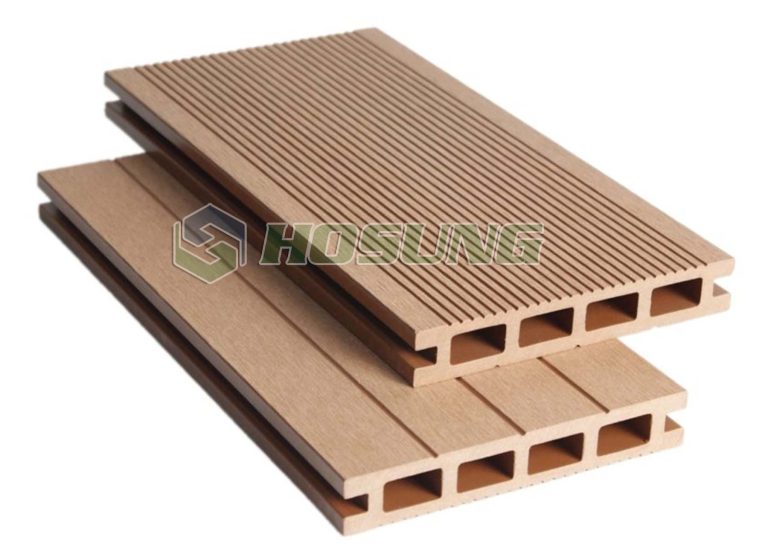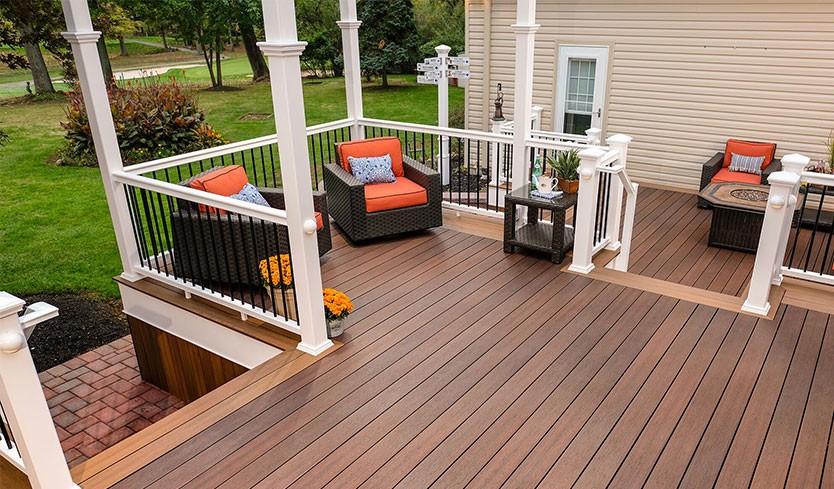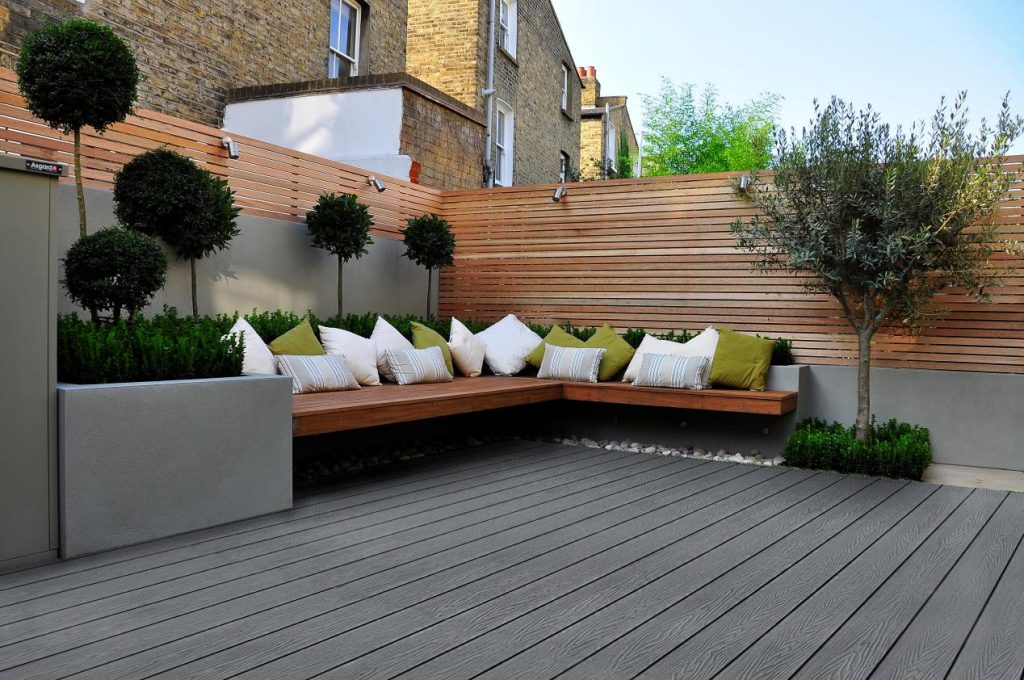When planning an outdoor deck, many homeowners and contractors focus on color, texture, and price—but often overlook a critical factor: composite decking thickness. The thickness of your composite boards plays a huge role in structural stability, aesthetics, safety, and long-term durability.
Table of Contents
Whether you’re considering 25mm thick decking boards for a garden patio, or exploring 2 inch thick composite decking for a high-load commercial project, understanding your options can help you avoid costly mistakes. In this article, we’ll guide you through the types of composite decking thicknesses, their applications, pros and cons, and how to choose the best one for your needs.
Why Composite Decking Thickness Matters
Composite decking has become a top choice for outdoor flooring due to its weather resistance, low maintenance, and eco-friendliness. But beyond material composition, composite decking thickness directly affects:
Structural strength and span rating
Weight-bearing capacity
Feel underfoot and sound dampening
Resistance to warping and flexing
Long-term durability
A thicker board generally provides more rigidity, making it suitable for commercial use or decks that need to support heavy furniture or foot traffic. Thinner boards can reduce cost and weight—ideal for smaller decks or less demanding applications.
Choosing the wrong thickness can lead to sagging, excessive flex, or even structural failure in worst-case scenarios. Therefore, a thorough understanding of your needs is essential.
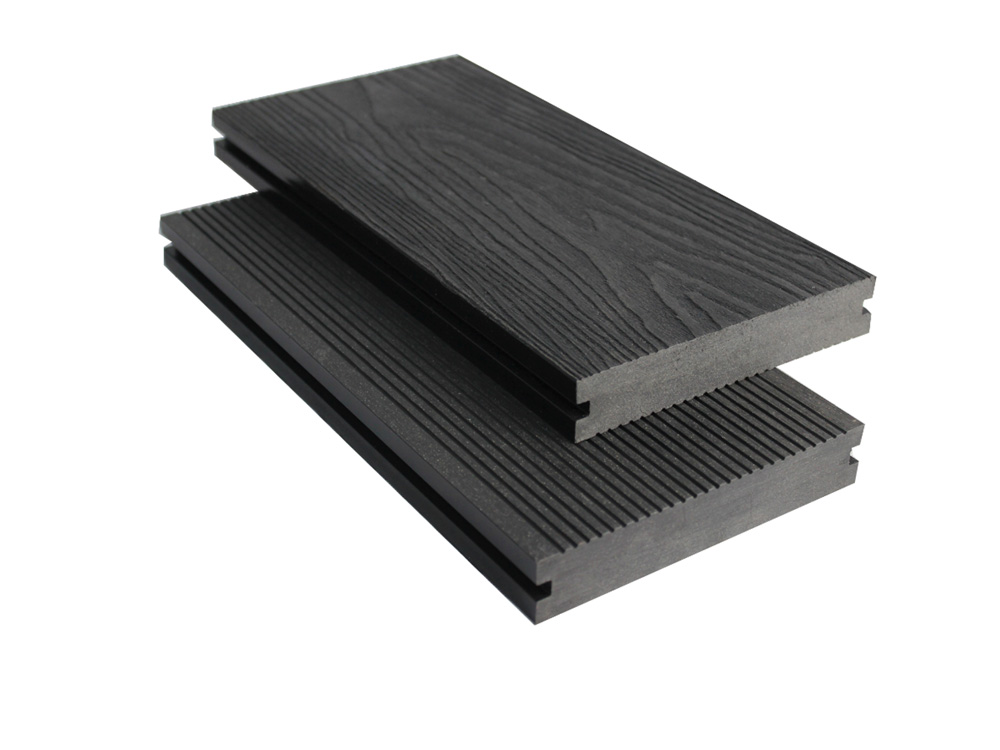
Standard Composite Decking Thicknesses Explained
The term composite decking thickness usually refers to the vertical height of a decking board, not its width or length. This measurement is crucial because it directly affects strength, weight capacity, installation method, and long-term performance. Most composite decking boards fall within a few standardized thickness categories, each tailored to specific applications.
1. 20mm – 25mm Thick Boards
These thinner boards are designed for light-duty applications and are a favorite among homeowners with small patios or limited budgets.
Common in garden walkways, balcony flooring, and DIY tile systems
Require tight joist spacing (typically 250mm–300mm on center) to avoid flexing
Lightweight, easy to cut, handle, and transport
Lower material usage makes them eco-friendly and budget-friendly
These are best for areas with minimal foot traffic and where the deck sits directly over a solid base or low frame.
2. 26mm–28mm Composite Boards
Though slightly less common than 25mm or 30mm, 26mm–28mm boards are becoming more popular in markets where users need slightly enhanced stiffness without upgrading to 30mm.
Better span capacity than 25mm
Suitable for elevated residential decks
Frequently offered as grooved or solid-edge boards
Moderate price point, offering a balance of performance and affordability
These are a great in-between option for projects needing more than entry-level specs but not full commercial-grade performance.
3. 30mm Thick Decking Boards
30mm is widely regarded as the standard for mid-range composite decking boards.
Ideal for residential and light commercial use
Supports joist spacing of 400mm–450mm, reducing subframe cost
Available in hollow-core or solid-core profiles
Feels more stable and premium underfoot than thinner boards
This thickness is a go-to choice for multi-purpose outdoor spaces, including dining areas, lounge decks, and pool surrounds.
4. 1.5 Inch Thick Composite Decking (≈38mm)
Designed for strength and resilience, this class is suited for both heavy residential and moderate commercial use.
Great for roof terraces, resort decks, and public spaces
Reduced bounce, increased noise insulation
Often features deep embossing or dual-capped finishes for aesthetics
Can support wider joist spans (500mm–600mm in some cases, depending on brand)
Ideal when comfort and durability are equally important.
5. 2 Inch Thick Composite Decking (≈50mm)
The thickest commonly available type, 2 inch thick composite decking is engineered for extreme applications.
Designed for public walkways, event venues, and heavy equipment zones
Withstands exceptional loads, including planters, furniture, and crowds
Requires a reinforced substructure and professional-grade fasteners
Lifespan often exceeds 30 years with minimal maintenance
Due to its bulk and structural integrity, this option is also useful in rooftop structures or industrial environments.
6. Custom Thicknesses (Over 50mm or Under 20mm)
Some manufacturers like Hosung offer custom-thickness solutions, especially for architectural or modular decking systems.
Thicker than 2 inches for specialized platforms or modular stage flooring
Under 20mm for interior use or decorative wall cladding
Custom profiles may be produced based on project specifications, but usually require larger order volumes
These custom solutions are great for bespoke commercial builds or when blending decking into hybrid architectural elements.
By understanding the range of composite decking thickness options available—from thin 20mm boards to heavy-duty 50mm slabs—you can make smarter decisions tailored to your project’s design goals, load requirements, and budget.
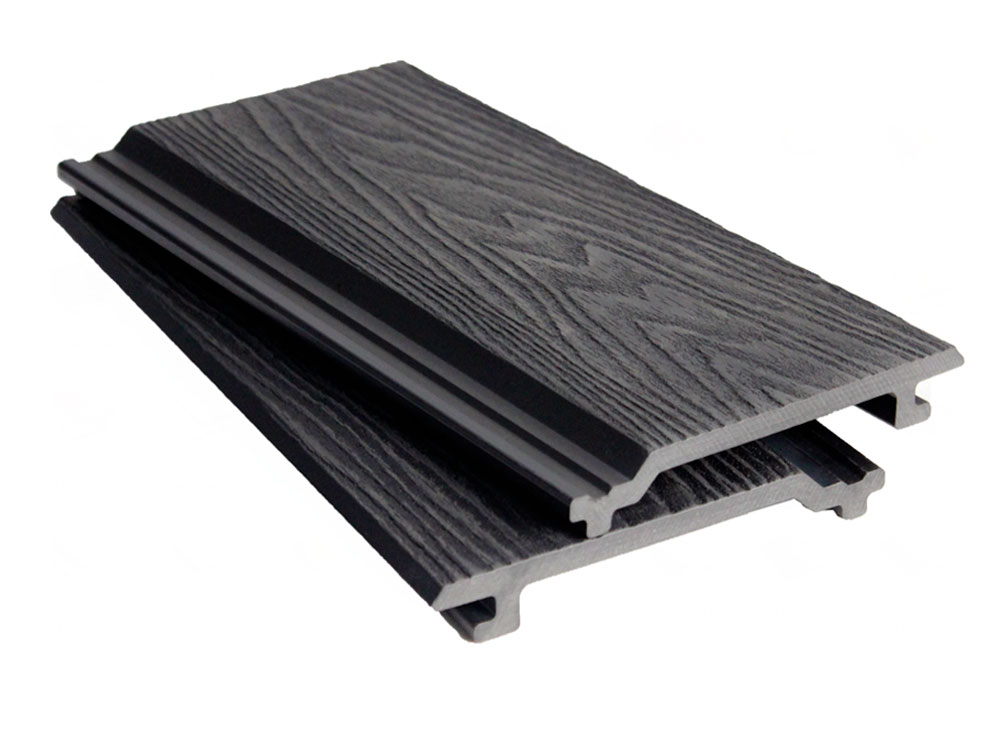
Choosing Between 25mm and 30mm Thick Decking Boards
Two of the most common choices for homeowners are 25mm and 30mm thick decking boards. Here’s how they stack up:
| Feature | 25mm Boards | 30mm Boards |
|---|---|---|
| Weight | Lightweight | Slightly heavier |
| Structural Span | ≤ 300mm joist spacing | Up to 450mm joist spacing |
| Cost | More affordable | Slightly higher |
| Flex Resistance | Moderate | High |
| Recommended Use | Gardens, patios, walkways | Balconies, elevated decks |
| Sound/Feel Underfoot | Softer | More solid |
For tight budgets or simple installations, 25mm thick decking boards are sufficient. However, if your deck is raised or will experience heavier use, 30mm composite decking thickness offers more safety and stability.
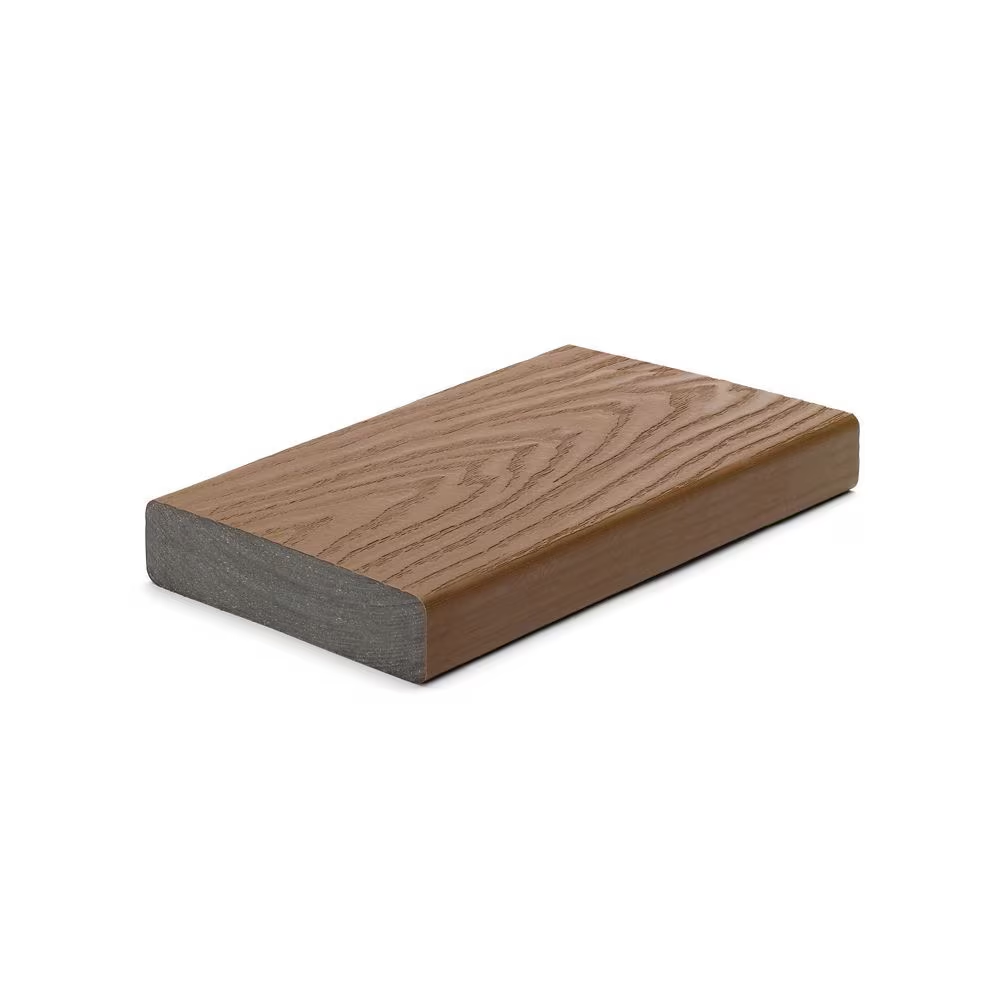
Heavy-Duty Options: 1.5 Inch to 2 Inch Thick Composite Decking
For industrial projects, rooftop platforms, or extra-large decks, 1.5 inch thick composite decking and 2 inch thick composite decking are top-tier solutions.
Benefits of Heavier Decking:
Increased Span Strength: Fewer joists required
Maximum Load-Bearing: Ideal for hot tubs, planters, or outdoor kitchens
Longer Lifespan: Thick cores resist wear, moisture, and impact
Solid Underfoot Feel: Little to no bounce when walking
Key Considerations:
Heavier boards require stronger substructure and more robust fasteners.
Installation is more labor-intensive.
Cost is higher—but the ROI can be worth it in demanding environments.
You might not need these thicker boards for a residential backyard, but if you’re building for durability or commercial use, they’re worth every penny.
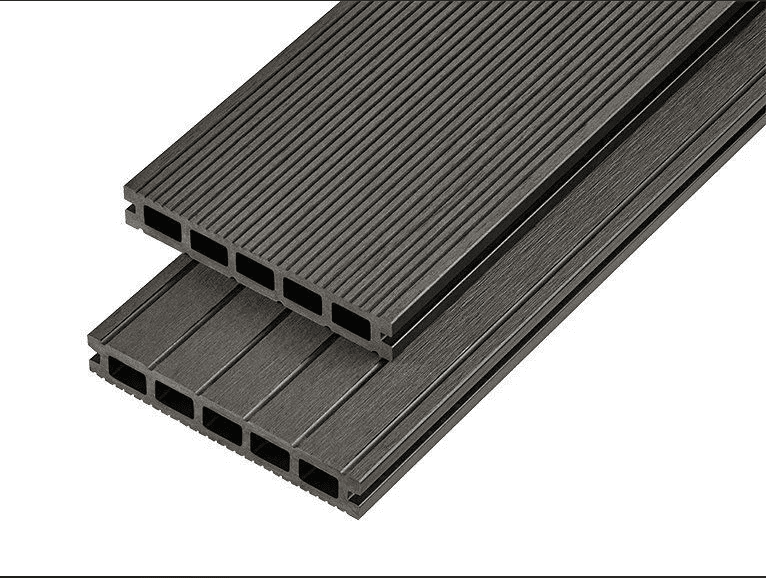
Composite Decking Thickness by Application Area
Here’s a quick guide to match composite decking thickness to real-world usage:
| Application | Recommended Thickness |
|---|---|
| Garden Paths | 20–25mm |
| Residential Patios | 25–30mm |
| Raised Balconies | 30mm |
| Rooftop Decks | 30–38mm |
| Public Boardwalks | 1.5 inch (38mm) |
| Commercial Platforms | 2 inch (50mm) |
Always consult load ratings and local building codes when selecting a thickness for elevated or load-bearing decks.
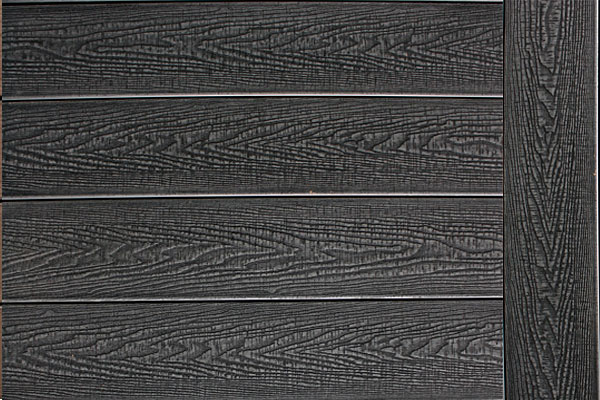
Hosung’s Range of Composite Decking Thickness Options
Hosung offers a wide selection of composite decking thickness variations to meet different structural and aesthetic needs. Their lineup includes:
25mm hollow core boards for lightweight and economical use
30mm solid core boards designed for strength and minimal flex
Customized thicker profiles (1.5 inch and beyond) for commercial or rooftop decks
The company focuses on blending function with form—many of their thicker boards also offer wood-like grain finishes, deep embossing, and capped technology for better weather resistance.
Whether you’re after a sleek, minimalist balcony or a robust public platform, Hosung’s versatile range covers most thickness needs without compromising on style or sustainability.
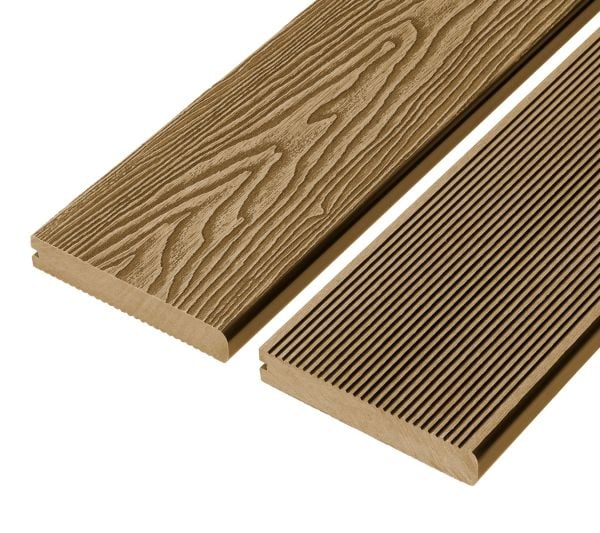
Tips for Selecting the Ideal Board Thickness
Choosing the right thickness doesn’t have to be confusing. Use the following criteria to guide your decision:
1. Deck Height & Substructure
Elevated decks need stronger boards—go with 30mm or thicker. Ground-level decks can use 25mm safely.
2. Load Expectations
Hosting parties? Placing heavy furniture? Choose 1.5 inch or more for minimal deflection.
3. Climate & Expansion
In extreme climates, thicker boards expand and contract less, offering better dimensional stability.
4. Budget Constraints
Thinner boards save cost, but may require tighter joist spacing, which adds framing expenses. Calculate your total system cost, not just board price.
Installation Considerations Based on Thickness
Composite decking thickness affects installation in a few critical ways:
Joist Spacing: Thicker boards = wider spacing = less framing
Fastener Type: Heavy-duty screws or hidden clips may vary by thickness
Cutting & Handling: 2 inch thick composite decking is much heavier—require stronger blades and more manpower
Thermal Expansion: Thicker boards tend to be more dimensionally stable but need spacing gaps
Always follow the manufacturer’s installation guide, especially for thicker profiles.
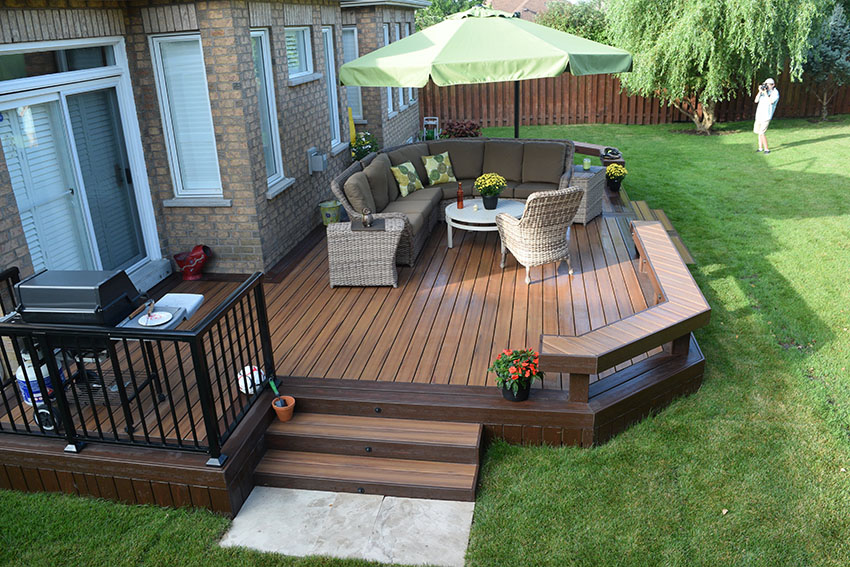
Composite Decking Thickness vs. Wood: A Practical Comparison
Here’s how composite boards compare to pressure-treated lumber of the same thickness:
| Feature | Composite (30mm) | Wood (30mm equivalent) |
|---|---|---|
| Moisture Resistance | Excellent | Prone to rot, warping |
| Maintenance | Low | High (staining/sealing) |
| Span Rating | Similar, but stiffer | More flexible |
| Cost | Slightly higher upfront | Lower upfront, more upkeep |
| Weight | Denser, heavier | Lighter |
In many cases, thicker composite boards outperform wood both structurally and in longevity, making them a smart investment despite a higher upfront cost.
Final Thoughts
Composite decking thickness is more than just a number—it directly influences how your deck performs, looks, and feels for years to come. From 25mm thick decking boards perfect for weekend DIYers, to ultra-durable 2 inch thick composite decking designed for the heaviest-duty applications, the right board thickness can make or break your project.
Before finalizing your materials, assess your load requirements, joist spacing, and design intent. Always consider the full cost of framing, installation, and long-term maintenance—not just the board itself.
And if you’re looking for a trusted supplier, Hosung offers an impressive variety of decking profiles tailored to meet both aesthetic and structural expectations, including thickness options for virtually any project size or budget.
Ready to start your project?
Make an informed decision with the right composite decking thickness and enjoy a safe, beautiful, and long-lasting outdoor space.
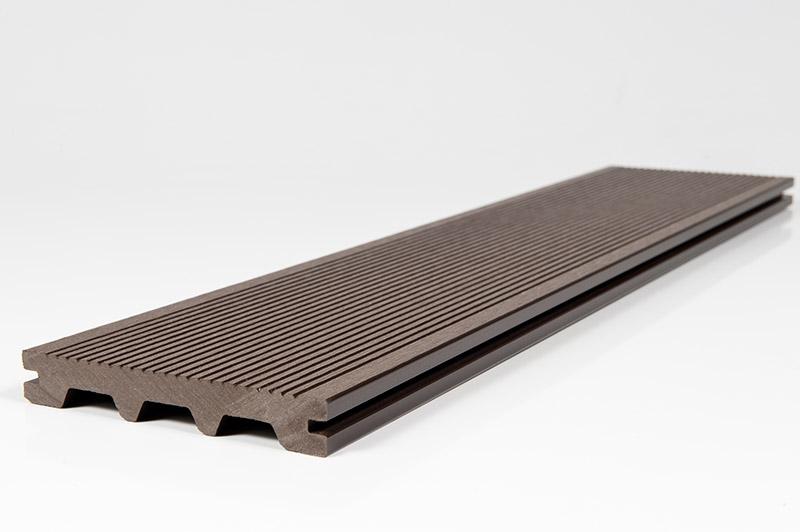
Final Thoughts
1.5 inch thick composite decking is not just a premium choice—it’s a performance upgrade for serious outdoor projects. Whether you’re crafting a luxury deck by the sea, designing a commercial terrace, or simply want something that will outlast traditional options, these thick-profile boards are an ideal solution.
While the upfront cost may be higher, the reduced need for frequent maintenance, extended warranty periods, and superior durability make it a smart investment in the long term. If your deck is meant to last, look great, and support real-world usage scenarios, upgrading to 1.5 inch thick composite decking might be the best decision you make.
FAQs
Q: Can I mix 1.5 inch and standard composite decking boards?
A: Technically yes, but visually and structurally it’s not recommended. The difference in thickness can cause uneven surfaces and load inconsistencies.
Q: Is 1.5 inch decking suitable for DIY installations?
A: Yes, especially with pre-grooved hidden fastener systems. However, because of its weight and density, it’s easier with two people and the right tools.
Q: Does it come in grooved and square-edge versions?
A: Most manufacturers offer both, to accommodate different fastening systems and border trim requirements.

